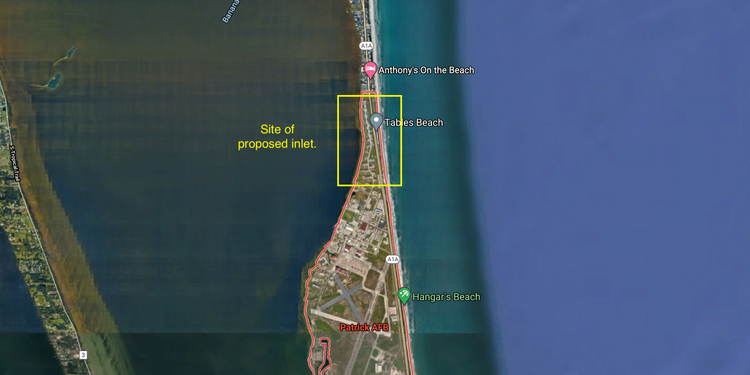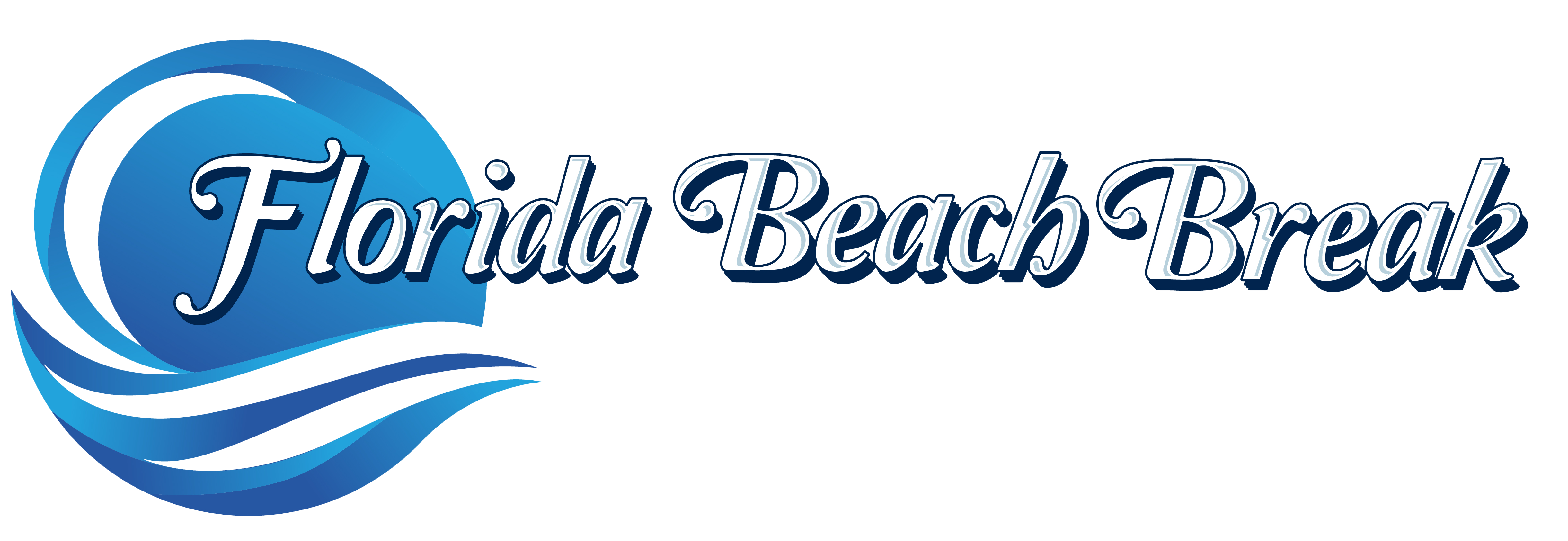
Another inlet on the Space Coast may not be as far out as you think. While talk about cutting a new inlet has circulated for years, a proposal is still gaining momentum. With over thirteen thousand signatures in favor, the proposal introduces the location of a new inlet just north of the runways at Patrick Air Force Base. “An available area that runs 5,000 feet from the base’s northern perimeter would provide sufficient space for building an inlet waterway with potential for hydropower infrastructure if deemed viable by USACE. This proposed area includes the construction of a new bridge or causeway to connect Highway A1A. The bridge may be built prior to cutting the inlet so that traffic on A1A would not be interrupted during the project.”
But more concerning than traffic patterns would be the environmental effect of introducing saltwater into the brackish water of the Indian River Lagoon and the cost to Brevard County tax payers.
Indian River Lagoon's environmental decline:
The proposal came about due to the diminishing health of the Indian River Lagoon. Currently the environmental state of the lagoon is threatened due to nutrient seepage from muck, degraded sewage treatment infrastructure, pesticide and agricultural runoff, and excessive freshwater inputs. The proposal also states “Developing a new inlet with the potential for hydroelectric capabilities will reciprocate many economic benefits throughout our region.”
The Indian River Lagoon is one of the most beautifully diverse ecosystems on the east coast of Florida containing over 2,100 species of plants and more than 2,200 species of animals including more than 1,000 dolphins who are unique to the lagoon. Man-made causeways have bottlenecked the lagoon's natural flow of water causing the lagoon to experience two and a half times more freshwater while cutting an inlet would ideally balance that out. However, a new inlet in this area would not be the first inlet the Indian River Lagoon has seen. Analysis of sediment shows evidence that a natural inlet was once located at the Thousand Islands in Cocoa Beach. Since the natural inlet has closed and the lagoon turned to brackish water, marine life has adapted to the current salinity levels. With opening a new inlet and introducing vast amounts of saltwater into the lagoon, the current ecosystem that has done its best to adapt to brackish water could be threatened. To handle this, the proposal states “Slowly introducing clean ocean water into the Indian River Lagoon during construction of the inlet may be achieved in a controlled and gradual manner so that any effect will be marginal once the inlet is completed and fully open. Moreover, a slow and gradual salinity acclimation should allow marine life to adequately adapt and naturalize in preparation for salinity spikes from a potential storm surge. The improved water quality and return of natural salinity levels from clean ocean water should encourage the surrounding habitat to thrive overtime.”
This all sounds very encouraging however water flows two ways. With the current state of the sewage treatment infrastructure and pesticide/agricultural runoff into the lagoon, concern is warranted over the flow of contaminated water out of the proposed inlet into neighboring beach communities. The proposal does state “resolving these other core issues is imperative so that the inlet’s neighboring beaches do not become subsequently polluted from the outflow.” Where that plan or budget is remains to be seen.
How will this affect the ecosystem on the ocean side:
If proper resources are allocated to solving the pollution problems plaguing the lagoon, the outlook of the proposed inlets affect on marine life is actually quite promising. With a proper inlet design, beach erosion can be mitigated and the jetties may introduce a new opportunity for marine life. “Reinforcing the north and south points on the inlet’s oceanside to simulate the natural coquina mid-reef will benefit the nearshore ecology and protect against erosion, while providing a recreational asset for prime fishing grounds and world-class surf break. Classic inlet-shoreline dynamics should be expected with sediment building to the north protecting Cocoa Beach, and marginal sediment attrition to the south enhancing the exposure of the natural mid-reef habitat.”
Who is footing the bill:
According to the proposal, construction of a new inlet and subsequent bridge construction would come at no cost to local taxpayers. By developing the inlet on federal government land, it aligns the project with the core mission of the Army Corps of Engineers which states “reducing flood risks along our coasts and restoring aquatic ecosystems''.
It would appear at a first glance through the proposal, the authors have indeed thoroughly thought out all effects of a new inlet and even provide links to scientific data backing up their assertion that an inlet is crucial to the Indian River Lagoon’s environmental health as well as increased value to the area via increased tourism dollars through fishing and surfing.
As good as this looks, there remains staunch criticism against cutting a new inlet. Randall Parkinson, a geologist who has worked with coastal zone management issues for over 35 years states none of the above can be done, and these proposals actually turn attention away from the root cause of the lagoons demise. In an article with Florida Today, he stated “Elixirs like this one distract us from the real cause of the lagoon’s demise: the massive influx of nutrients (nitrogen and phosphorus) from surface water, septic, and water treatment plants that have accompanied urban growth over generations.”
Parkinson continued to knock down almost every point the proposal makes in one single paragraph. In regards to ecosystem and water quality restoration he states “The influx of sea water into the lagoon via a new inlet doesn’t restore its water quality. It changes it from estuarine to marine. In the process, it dilutes nutrient loads during the flooding tide as seawater mixes with lagoon water and exports the polluted mixture into the Atlantic Ocean during outgoing tides. Over time, ecosystems and habitats historically present in this part of the lagoon and adjacent Atlantic Ocean coastal waters will be replaced by those that can tolerate more salt and less pollutants (lagoon) or less salt and more pollutants (ocean).”
Unfortunately, he also points out a crucial flaw in the proposed inlets payment plan. “The petition suggests all the costs to construct and maintain the new inlet could be paid for by the U.S. Army Corps of Engineers. But Corps involvement with inlet management is predicated on the feature being classified as “navigable.” The design features and requirements of a new navigable inlet are very different from a non-navigable one and likely detrimental to the petition’s objectives.”
All opinions aside, the fact remains the Indian River Lagoon and its ecosystem is diminishing. As Randall Parkinson states “We cannot lose sight of the real antagonist: nitrogen and phosphorus. The only real practical, realistic, and viable means of improving water quality is source reduction: reducing nutrient input from surface water conveyance systems, septic tanks, and wastewater treatment plants. That said, we must be mindful the necessary upgrades and new construction will take decades to complete and cost billions of dollars. Now is the time for us all living within the lagoon watershed and beyond to recognize nutrients are the culprit and to support mitigation actions designed specifically to reduce or eliminate their input.”
View the proposal in its entirety on Change.org
Want to List your Business? Click Here
